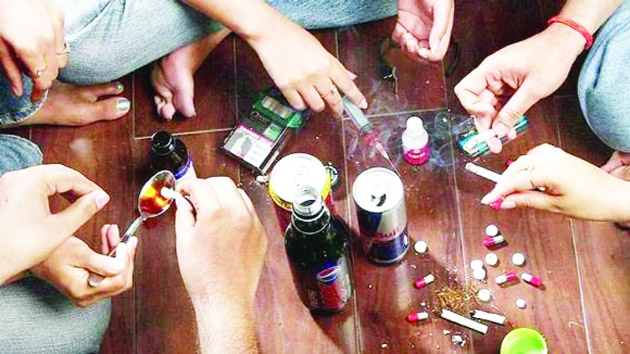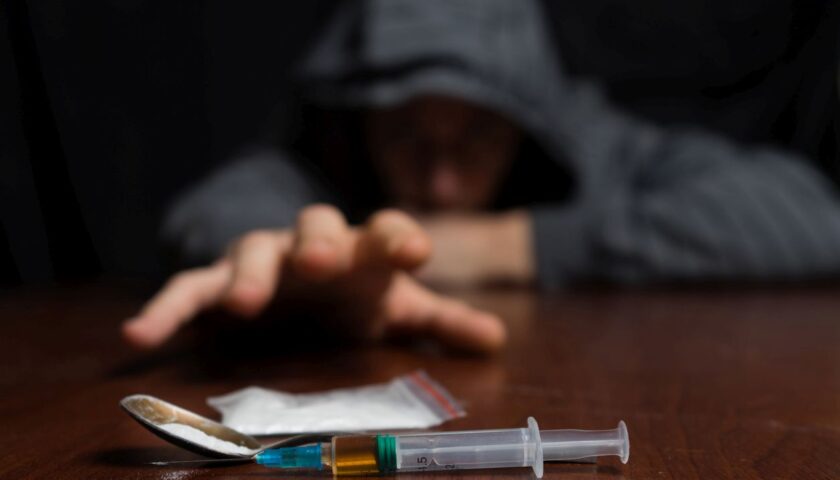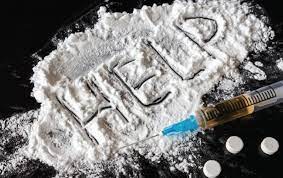By: Mudasir Wani
Kashmir valley, renowned for its beauty and culture, has recently been cast into the shadows by a growing epidemic – drug addiction. This ominous presence is unraveling the social fabric and dragging the valley into a bleak abyss.
The Pandora’s box of this crisis is wide open. The Ministry of Social Justice and Empowerment recently revealed in the Lok Sabha that nearly 10 lakh people in Jammu and Kashmir are entangled in the clutches of drug addiction. To put this into perspective, the population of Jammu and Kashmir, as per the 2011 census, is 1.25 crore. These figures starkly depict the magnitude of the problem; it’s estimated that approximately 1,08,000 males and 36,000 females in the Union Territory consume marijuana (Cannabis). The numbers spiral with 5,34,000 males and 8,000 females addicted to opioids, and 1,60,000 males and 8,000 females trapped in the grip of various sedatives. An alarming 1,27,000 males and 7,000 females resort to inhalants, while many individuals are ensnared by cocaine, Amphetamine-Type Stimulants (ATS), and Hallucinogens.
A study by IMHANS-K reveals that 33.50% of married drug users and 61.70% of unmarried drug addicts in Kashmir are adults, underscoring that drug addiction affects not only children but also the elderly.
This wave is a tsunami, shaking the very foundations of our society. Numbers and trends merely scratch the surface. The infiltration of drugs is corroding the conscience and sound judgment of our youth. It’s a theft – religious, moral, and intellectual. Our youth are drowning in turbulent waters, and rescuing them from this deadly wave is a Herculean task. Educational institutions, once pillars of knowledge and enlightenment, are now battlegrounds against drug addiction. This menace has stolen the dreams and careers of thousands of students, tainting the morality, ethics, and values of the student community.
Drug addiction has given rise to multiple social issues, including crime and violence, while also fracturing the family structure. We can’t afford to turn a blind eye to the devastating consequences of this problem.
The soaring crime rate in Kashmir is intricately linked to drug addiction. Recent horrifying incidents, like a son brutally murdering his mother under the influence of drugs, highlight the grim reality. Another individual, driven by addiction, attacked people with a wooden log, killing three, including his mother, and injuring several more.
The rapid escalation of drug addiction in Kashmir stems from various factors – a sense of detachment, unemployment, peer pressure, lack of recreational facilities, and the longstanding political conflict. The government’s efforts to apprehend drug dealers have been valiant, yet the problem persists.
In the words of Shahab Jafri:
“Tuu Idhar Udhar Ki Na Baat Kar…Ye Bata Keh Kafila Kyun Luta
Mujhe Rehzanoon Ka Gilah Nahin…Teri Rehbari Ka Sawal Hai.”
The government and civil society must unite, taking concrete steps and making joint efforts to eradicate the menace of drug addiction. The government must adopt an unyielding stance against drug traffickers and suppliers. Civil society and rehabilitation centers should step up, organizing workshops, seminars, and programs in universities, colleges, and other educational institutions to raise awareness about the dire consequences of drug addiction.
Let’s cultivate a culture of compassion, understanding, and empathy, reinforcing the significance of family bonds and community support. Together, we can create an environment where our youth feel valued, heard, and understood.
The challenge is daunting, but so is the resilience of the valley. Let’s stand together, breaking the chains of addiction and rekindling hope, prosperity, and a brighter future for all. Together, we can build a valley free from the clutches of drug addiction, where our youth can flourish, and our society can thrive once more.
This battle isn’t just for today; it’s for generations to come. Let’s sow the seeds of change now, so that our grandchildren can reap the harvest of a drug-free and prosperous valley. Remember, the ultimate remedy lies in the divine decree. The remembrance of the Almighty can heal both the visible (body) and the invisible (soul). Parents, too, bear a profound responsibility to closely monitor their children and encourage their spiritual connection. Love, sympathy, and moral support are essential tools in this spiritual remedy.
The budding poet wrings her soul with myriad paroxysms:
In shadows deep, addiction’s grasp entwines, Valley’s youth lost, in troubled waters ‘brine,
Divine Decree, a cure to heart and mend, Together we stand this battle we’ll transcend.






